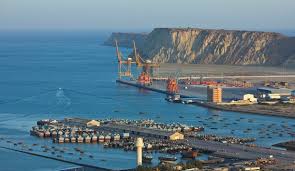Gwadar, the third deep-water port in Pakistan, now operates three multifunctional piers with an annual throughput capacity of between 50,000 and 70,000 20-foot equivalent units, as well as bringing 20,000 jobs to the locals.
The port will also serve as a trade gateway for East and Central Asian countries to other parts of the world, according to Chairman, China Communications Construction Co, Liu Qitao on Sunday.
After the completion of the construction, CCCC will also be responsible for a series of follow-up projects, such as the operation of a free-trade zone in Gwadar Port, he told local media.
After the completion of 60 percent of the first-phase construction of Gwadar’s free zone, the Chinese engineers and their Pakistani counterparts are hoping the free zone to be operational as early as possible, Hu Yaozong, deputy general manager of the Gwadar Free Zone Company said.
The free zone is a key step towards developing the Gwadar port into an important regional hub that will benefit not only south Asia but also the countries in central Asia and the Middle East.
The free zone covers about 923 hectares of land and will be developed in four phases. It is designed to take advantage of Balochistan’s rich fishery and mineral resources to develop relevant industries for overseas market and to develop the light industry for the domestic consumption.
As a part of the light industry plan, China’s Linyi overseas market, a comprehensive shopping mall project, will soon be introduced into the free zone.
“The Linyi market in Gwadar will develop an overseas warehouse so as to make their goods not only available in the Pakistan market, but also in markets around the region,” said Hu.
According to Hu, the first round of investment has almost completed with projects on fishery and electric motors settled and business centre enterprises moved in.The second-phase construction of the free zone is featured with a huge stainless steel factory, which, Hu added, would create a considerable number of jobs for locals in Gwadar, which has a population of less than 100,000.
With the further development of the port and free zone, workforces in other villages around Gwadar are expected to flow into Gwadar.
According to the deputy general manager, a training school donated by China will be completed soon. After short-term training, local people are expected to find a position in the developing Gwadar, he said.
Munir Ahmad Jan, director general of the Gwadar Port Authority (GPA), also shows high expectations for Gwadar’s future.
Besides Chinese and Pakistani investors, a lot of investors from other countries have come to the GPA to consult on business opportunities in the free zone, he said.
He said as businesspeople have seen the bright future of the Gwadar port, a lot of Pakistani real estate investors came to Gwadar to purchase land.
The development of the Gwadar port is not only in the economic field but also at a broader social level.
The medical centre, which will come into service as early as in May, is designed to carry out basic diagnosis and treatment, conduct small surgeries and emergency rescues.
It will initially be operated by Chinese medical teams and be gradually handed over to the Pakistani side in the future.
In September last year, a China-donated primary school came into use in Gwadar. The school had planned to enrol about 150 pupils, but more than 300 students in different grades attend the school as many locals believed that the school had better teachers and facilities.
























